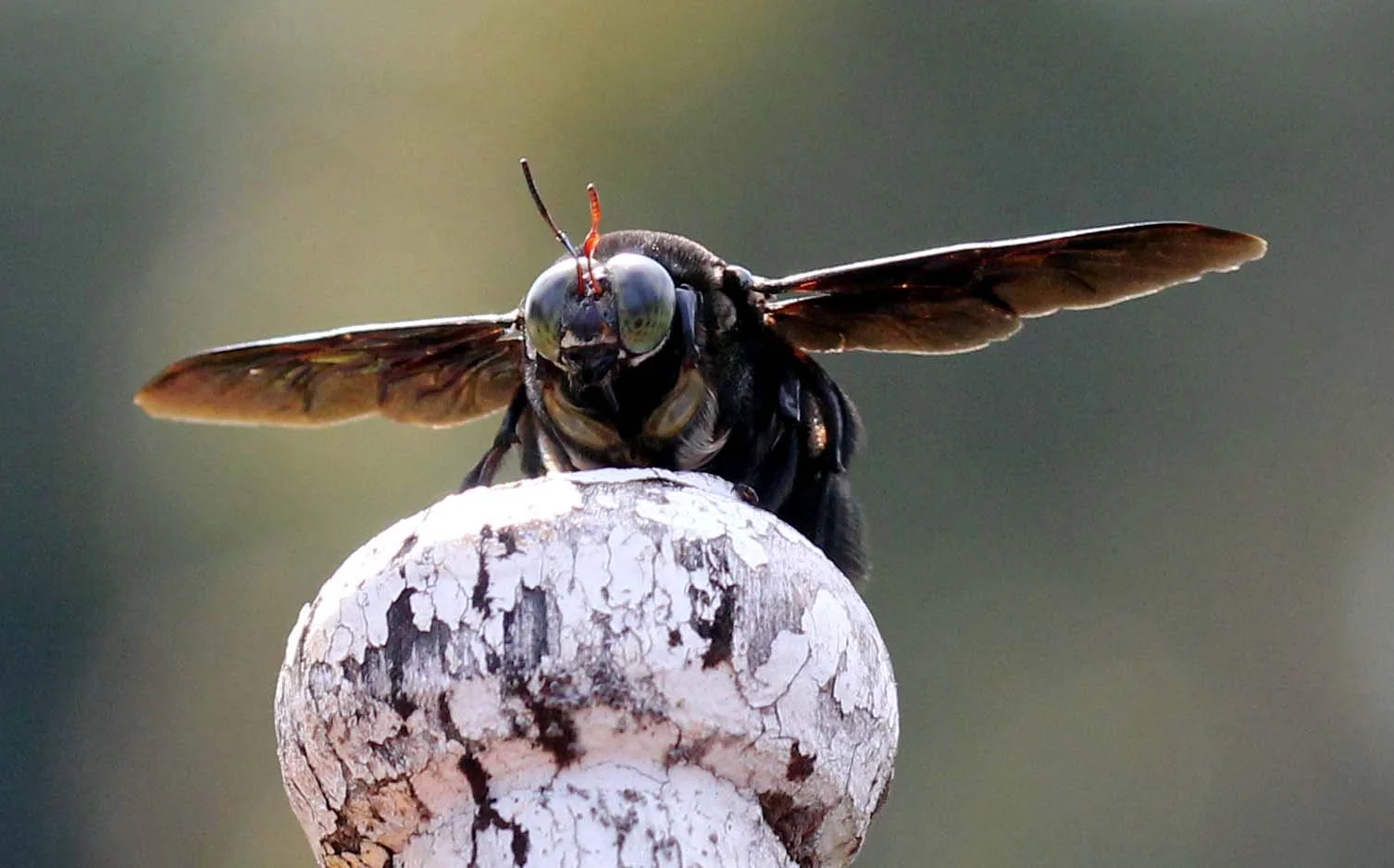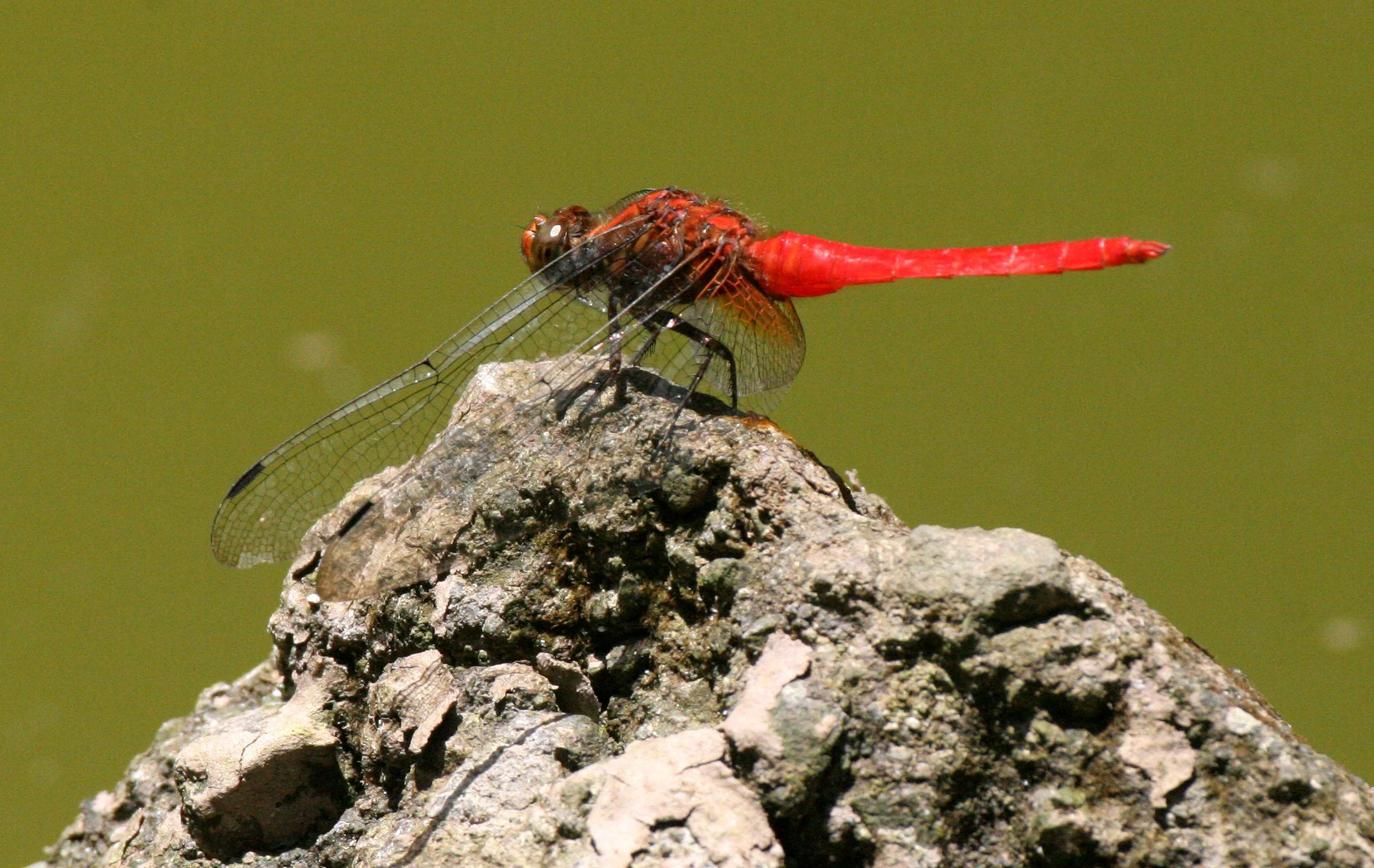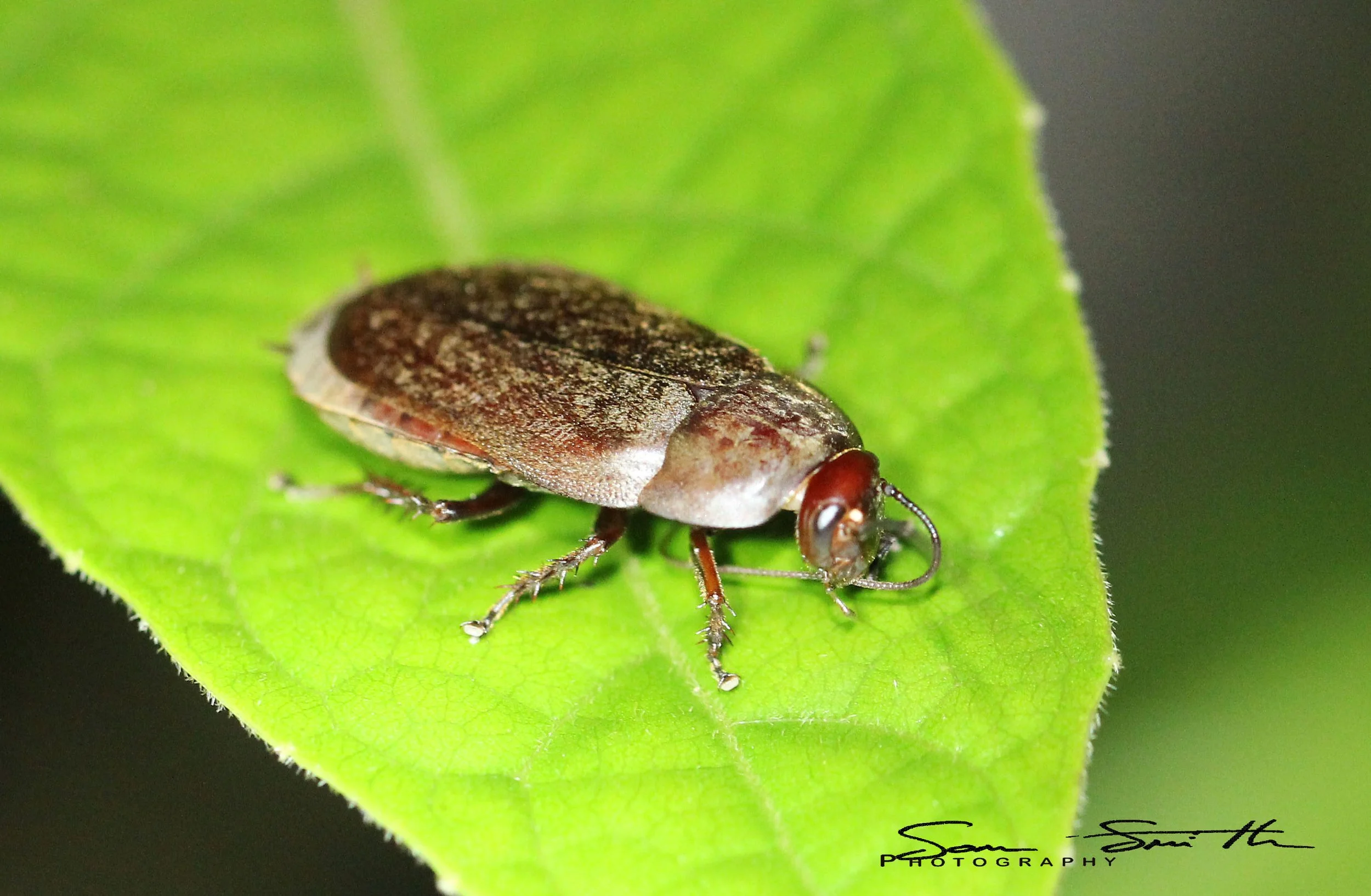Class Insecta
Rosalia formosa spotted in the foothills of Doi Inthanon, Thailand.
Insects (from Latin insectum) are hexapod invertebrates of the class Insecta. They are the largest group within the arthropod phylum. Insects have a chitinous exoskeleton, a three-part body (head, thorax and abdomen), three pairs of jointed legs, compound eyes, and a pair of antennae. Insects are the most diverse group of animals, with more than a million described species; they represent more than half of all animal species.
The insect nervous system consists of a brain and a ventral nerve cord. Most insects reproduce by laying eggs. Insects breathe air through a system of paired openings along their sides, connected to small tubes that take air directly to the tissues. The blood therefore does not carry oxygen; it is only partly contained in vessels, and some circulates in an open hemocoel. Insect vision is mainly through their compound eyes, with additional small ocelli. Many insects can hear, using tympanal organs, which may be on the legs or other parts of the body. Their sense of smell is via receptors, usually on the antennae and the mouthparts.
Eupatorus siamensis see in Khao Yai National Park, Thailand is a very rare endemic Dynastinae species.
Nearly all insects hatch from eggs. Insect growth is constrained by the inelastic exoskeleton, so development involves a series of molts. The immature stages often differ from the adults in structure, habit and habitat. Groups that undergo four-stage metamorphosis often have a nearly immobile pupa. Insects that undergo three-stage metamorphosis lack a pupa, developing through a series of increasingly adult-like nymphal stages. The higher level relationship of the insects is unclear. Fossilized insects of enormous size have been found from the Paleozoic Era, including giant dragonflies with wingspans of 55 to 70 cm (22 to 28 in). The most diverse insect groups appear to have coevolved with flowering plants.
Adult insects typically move about by walking and flying; some can swim. Insects are the only invertebrates that can achieve sustained powered flight; insect flight evolved just once. Many insects are at least partly aquatic, and have larvae with gills; in some species, the adults too are aquatic. Some species, such as water striders, can walk on the surface of water. Insects are mostly solitary, but some, such as bees, ants and termites, are social and live in large, well-organized colonies. Others, such as earwigs, provide maternal care, guarding their eggs and young. Insects can communicate with each other in a variety of ways. Male moths can sense the pheromones of female moths over great distances. Other species communicate with sounds: crickets stridulate, or rub their wings together, to attract a mate and repel other males. Lampyrid beetles communicate with light.
In common speech, insects and other terrestrial arthropods are often called bugs. Entomologists to some extent reserve the name "bugs" for a narrow category of "true bugs", insects of the order Hemiptera, such as cicadas and shield bugs. Other terrestrial arthropods, such as centipedes, millipedes, woodlice, spiders, mites and scorpions, are sometimes confused with insects, since they have a jointed exoskeleton. Adult insects are the only arthropods that ever have wings, with up to two pairs on the thorax. Whether winged or not, adult insects can be distinguished by their three-part body plan, with head, thorax, and abdomen; they have three pairs of legs on the thorax.
Preying Mantid from Koh Lanta, Thailand
Estimates of the total number of insect species vary considerably, suggesting that there are perhaps some 5.5 million insect species in existence, of which about one million have been described and named. These constitute around half of all eukaryote species, including animals, plants, and fungi.[10] The most diverse insect orders are the Hemiptera (true bugs), Lepidoptera (butterflies and moths), Diptera (true flies), Hymenoptera (wasps, ants, and bees), and Coleoptera (beetles), each with more than 100,000 described species.
The below images are links to the various orders of the Class Insecta that I & Som Sukjaroen have photographed over the years. ID’s are sparse and very tentative - any help you can provide is greatly appreciated. Feel free to correct me!
Order Lepidoptera - Moths & Butterflies
Order Coleoptera - Beetles
Order Diptera - Flies
Order Hemiptera - True Bugs
Order Hymenoptera - Bees, Wasps & Hornets
Order Homoptera - Leaf Bugs, Lantern Flies
Order Odonata - Dragonflies & Damselflies
Order Orthoptera - Grasshoppers & Crickets
Order Phasmatodea - Walking Sticks
Order Neuroptera - Lacewings & Dobsonflies
Order Isoptera - Termites
Order Mantodea - Mantids
Order Blattodea - Cockroaches
Order Trichoptera - Caddisflies
Order Mecoptera - Scorpionflies

















